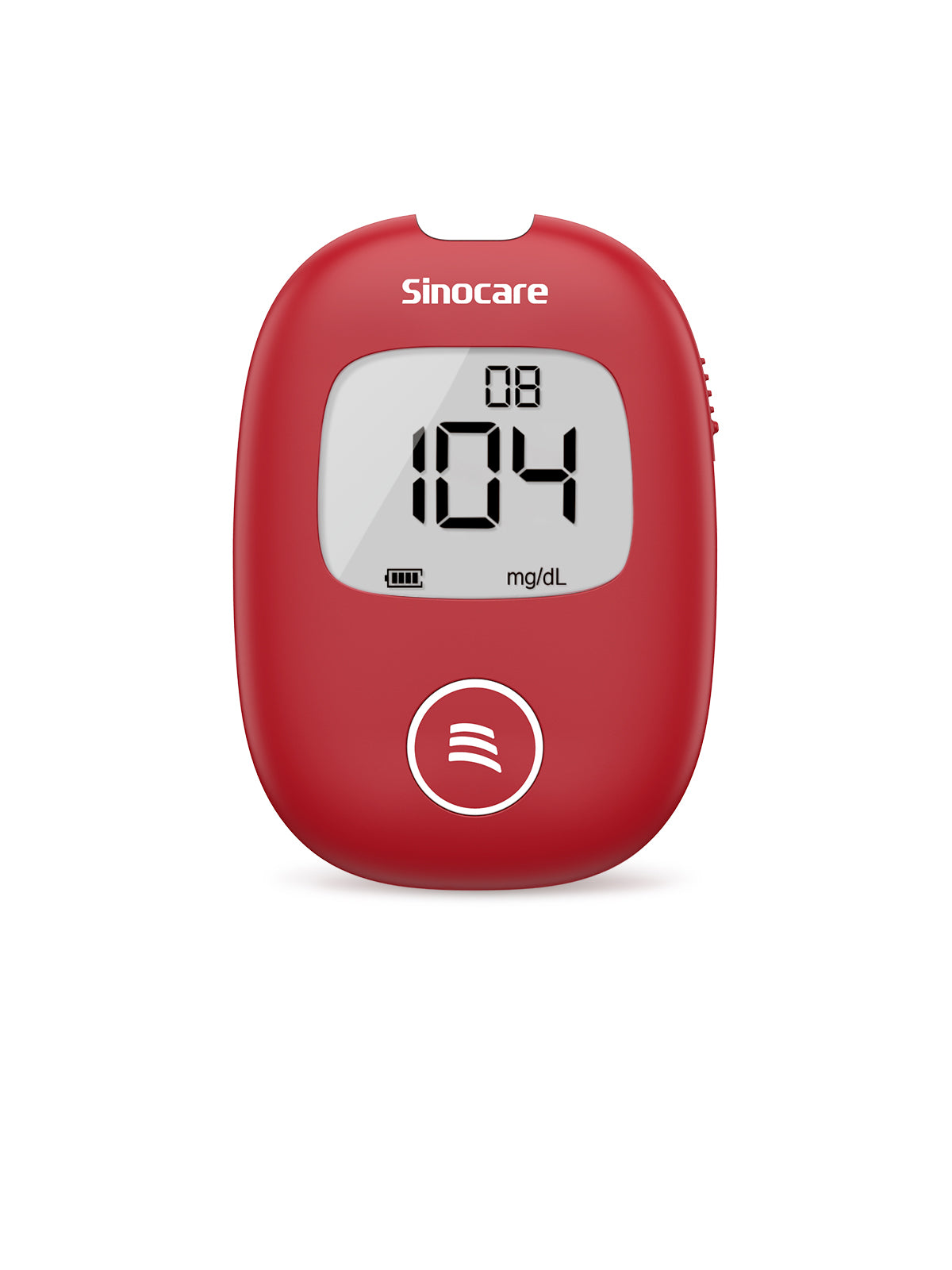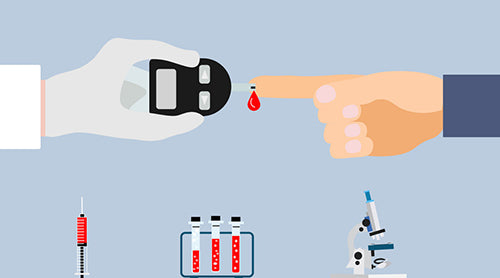One of the questions that some people who have just been diagnosed with diabetes often ask is "When is the best time to test my blood sugar?" . In some pharmacies and community hospitals, more than 50% of sugar lovers do not have the habit of taking blood glucose test. So, what is the significance of blood glucose testing for sugar lovers? How often is it reasonable to test blood glucose?
Blood glucose monitoring has been recognized by the International Diabetes Federation as one of the five carriages of diabetes treatment, and clearly states that proper self-monitoring of blood glucose can reduce the risk of death by 51% and the risk of complications such as heart disease, stroke, blindness and amputation by 32%.
For blood glucose monitoring can not only stop at fasting blood glucose and post-meal blood glucose. Scientific blood glucose monitoring actually includes multiple time periods, i.e. fasting blood glucose, pre-meal blood glucose, 2-hour post-meal blood glucose, bedtime blood glucose, random blood glucose, and if necessary, additional blood glucose measurement from 1 to 3 am.
Fasting blood glucose:
In order to understand the basal function of the islets, fasting blood glucose should be monitored. As the starting point of blood glucose changes during the day, fasting blood glucose is closely related to postprandial blood glucose. Fasting blood glucose can reflect the secretion level of basal insulin and liver glucose output in the state of no glucose load stimulation, and also whether the medication used in the evening of the first day can effectively control the blood glucose throughout the night and even in the early morning of the next day. Fasting blood glucose should be monitored first thing in the morning after waking up and overnight fasting for 8-12 hours (except for drinking water). The normal value of fasting blood glucose is 3.9-6.0 mmol/L.

Pre-meal glucose:
Different from morning fasting glucose, it is the glucose measurement before Chinese meal and dinner, which is mainly used for monitoring the condition in treatment.

Postprandial blood glucose:
Postprandial blood glucose refers to the blood glucose level 2 hours after eating. In order to understand the reserve function of islets after meals and whether the amount of medication and diet before meals are appropriate, the blood glucose should be monitored two hours after meals.GDM and pregnant women who need insulin therapy, monitoring postprandial blood glucose is more valuable than preprandial blood glucose, and pregnant women with postprandial blood glucose standard (<7.8 mmol/L 1h after meals) have a lower incidence of macrosomia compared with those with preprandial blood glucose standard (3.33-5.82 mmol/L). The incidence of macrosomia, cesarean section, and neonatal hypoglycemia were all reduced compared with those with premeal glucose (3.33-5.82 mmol/L). Two-hour postprandial glucose should be timed from the first bite of the meal.
Bedtime blood glucose:
It generally refers to the blood glucose value at 21~22 hours, which reflects the ability of pancreatic beta cells to control high blood glucose after eating dinner and is the basis for guiding the dose of medication or insulin injection at night. If you want to know the control of blood sugar before bedtime and whether you need to add meals at night, you should monitor the bedtime blood sugar.

Nocturnal blood glucose:
The significance of this is that if the blood glucose is high before breakfast, by monitoring the nocturnal blood glucose it is possible to know whether the hyperglycemia occurs at night or in the early morning, whether the cause of the high blood glucose before breakfast is a dawn phenomenon, or whether it is due to insufficient insulin action at night, or whether it is due to rebound hyperglycemia (Somogyi effect). The time point can be the blood sugar at 0:00, 2:00, 4:00, or 6:00.
Random blood glucose:
It refers to the measurement of blood glucose at any time of the day, usually not exceeding 11.1 mmol/L in normal people. Its significance is to capture the moment of hypoglycemia in time (within about 10 minutes). After hypoglycemia, the glucose hormone in the body will be released immediately, and the blood sugar will rise in about 10 minutes, even higher than the usual level, so it should be measured immediately. If the measurement is late, it is difficult to reflect the accurate condition of the disease.
The timing of monitoring should be different for people with different conditions of diabetes. For example, newly diagnosed diabetics often need to monitor their blood glucose regularly for a period of time, and should generally insist on measuring 4~7 times a day. When blood sugar control is relatively stable, monitor 2 to 4 times a month; for those whose blood sugar control is not up to standard, monitor fasting and postprandial blood sugar at least 4 times a week at different times. Try a new diet, before and after exercise, travel, adjust insulin dose or times, have hypoglycemic symptoms, and increase the monitoring frequency when you are pregnant or intend to be pregnant.
How to schedule blood glucose glucose testing frequency?
- Patients with relatively stable blood glucose control: arrange to measure fasting blood glucose and 2h postprandial blood glucose one day a week; arrange to measure all blood glucose one day every 2~3 weeks, i.e. before and after three meals, 2h after three meals and before bedtime, and also add to measure blood glucose at 3:00 a.m.
- Patients receiving insulin intensive therapy should measure blood glucose 5~8 times a day, 5 times refers to fasting, 2h after three meals and blood glucose before bedtime; 8 times refers to blood glucose before and after three meals, before bedtime and 3 am.
- The following diabetic patients whose blood glucose is still unstable should have their whole day blood glucose monitored once every 3~4 days.
- Those with substandard blood glucose control or unstable condition, with fluctuating high and low blood glucose.
- diabetic patients who have frequent asymptomatic hypoglycemic episodes.
- Female diabetic patients who are planning to become pregnant or during pregnancy.
- Patients with newly diagnosed diabetes mellitus.
- Patients with changes in daily life or habits (e.g., travel, exercise, changes in eating habits, etc.).










2 comments
Anwar Malik
Good medical advice
Anwar Malik
Good medical advice
Leave a comment
All comments are moderated before being published.
This site is protected by hCaptcha and the hCaptcha Privacy Policy and Terms of Service apply.